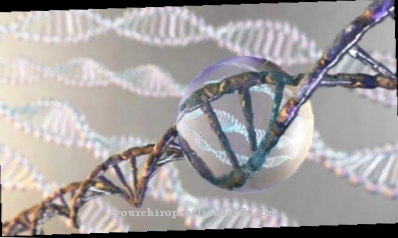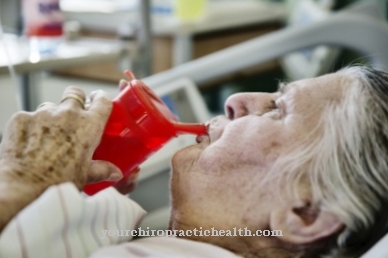The Senescence describes the degenerative process that accompanies natural aging. It is not a synonym for aging itself, but only includes its degenerative aspects.
What is senescence?

Every living being ages. The aging process goes hand in hand with the senescence of its cells: this means that they no longer divide as much as at the beginning of their life cycle. A young person still experiences rapid wound healing, growth and maturation of various organs, among other things due to the strong cell division activity. In old age, on the other hand, people reach a point where wound healing is slowed down and even degenerative diseases occur, which are mostly due to lower cell growth and thus structural weaknesses.
This degenerative process is senescence. Senescence in humans is only spoken of when natural (cell) aging brings about degenerative developments to the extent that humans suffer or become ill. Typical consequences of senescence are osteoporosis, the accumulation of the pigment lipofuscin ("age spots") or the higher mortality rate in old age due to such degenerative processes in the body.
The processes of senescence usually begin shortly after the end of the reproductive phase, as important hormones then disappear. It is not always possible to clearly distinguish between aging and senescence.
Function & task
Every living being has a different life span, which is dependent on the way of life and influences during its lifetime as well as possible life-threatening diseases. This is why this lifespan for humans was around 30 years in previous centuries and millennia - there are now many people who live to be over 100 years old.
Senescence affects the individual lifespan. It is therefore less to be viewed as a useful development for the individual, but rather contributes in an evolutionary sense to the fact that living beings die. If humans were immortal, they could pass on their genes, i.e. possibly produce more viable offspring, but soon there would no longer be enough living space for all offspring and parent generations on earth.
Aging itself does not necessarily lead to death. Senescence as part of the aging process, on the other hand, brings about the degenerative processes that can end in age-related death. Together with diseases that occur either as a result of the physical weakening of senescence or for other reasons in old age, senescence is one of the most common causes of death in old and aging people in the long term.
It cannot be stopped, but with the methods of modern medicine it is possible to positively influence degeneration through senescence and thus ensure a better quality of life for aging people. Life-sustaining and palliative measures can relieve symptoms of degenerative processes at the end of life and ensure freedom from pain.
A separate branch of medicine, geriatrics, deals with the treatment of the consequences of senescence. She is exclusively responsible for senescence-related illnesses in old patients and therefore also plays an important role in the psychological care of aging patients.
Senescence in cancer research offers a potentially positive perspective. Cancer cells divide quickly, faster than healthy cells. If cell division succeeds in decelerating, as in senescence, we could existing tumors are reprogrammed so that they do not divide. The cancer could be "frozen" with the help of senescence.
You can find your medication here
➔ Medicines against memory disorders and forgetfulnessIllnesses & ailments
Since senescence is a degenerative and unstoppable but natural process in the cycle of life, it must not be regarded as a curable phenomenon. Senescence itself is not a disease. Only their manifestations can maintain disease value or even end fatally, while others do not result in any medically relevant complaints.
Skin aging is one of the more harmless manifestations of senescence. Certain connective tissue cells stop dividing after a certain number of cell divisions, the connective tissue of the skin becomes weaker and can store less moisture - wrinkles appear. Spotty discoloration of the skin can often be seen in old people: they result from the fact that the lipofuscin pigment can no longer be broken down and consequently visibly accumulates in the skin. From an aesthetic point of view, all of this may be uncomfortable and stressful, but it is still medically relevant.
More complicated are the decrease in immune activity, which results in more frequent and worse infections, the decrease to the point of loss of vision or the slackening of the muscles, which generally weakens people as internal muscles such as the heart muscle can also be affected. Such consequences of senescence can end in serious illnesses and ultimately lead to the death of the aging person.
Such processes could only be stopped or cured if the responsible cells could be induced to divide again. However, since this is not possible, palliative and life-sustaining medicine plays a major role in geriatrics. Pain treatments and drugs that at least delay the consequences of senescence and thus preserve life longer, are the most important guarantees for the highest possible quality of life despite senescence.



























